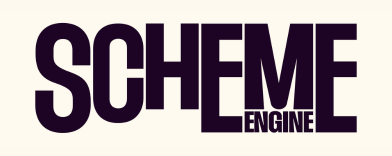
Transforming a Toronto Transit Hub Into an Experience Promoting Online Accessibility

It’s safe to say that in today’s advertising world, the majority of creative is designed with an able-bodied, neurotypical audience in mind. After all, marketing is meant to generate awareness among the masses, so appealing to the common denominator is something that can be strategically understood… even if it doesn’t sound great when said out loud.
At TD Bank Group, however, this line of thinking isn’t good enough. And for that reason, in 2023, the brand launched the TD Accessibility Adapter, a browser plug-in designed to aid internet user experience by offering customisable accessibility features, like adjustable font size and a monochrome mode.
"TD is focused on making online spaces more accessible for all, so more people feel supported and seen,” explains Tyrrell Schmidt, chief marketing officer at TD Bank Group. “Created to address the fact that only 3% of internet content is accessible, the TD Accessibility Adapter is a great demonstration of innovating with purpose and is reflective of our brand belief that people matter most.”
Of course, drawing people’s attention to the tool’s existence is an ongoing priority for the brand. And to this end, TD’s creative partner agency, Ogilvy Canada, has eagerly stepped up to bat over the past few years to ensure reach and visibility. In 2024, on Colour Blind Awareness Day, the two created an ad best read by those with the condition. And, just this past April, the pair launched a brand new execution in Toronto to grab eyes and ears once again.
Real Life Symbolism
According to Alexandre Andre, co-director of production for Ogilvy Canada, this recent one-week endeavour (April 22nd to 29th), titled the ‘TD De-straction Zone’ was all about capitalising on Neurodiversity Awareness Month. Tasked with simultaneously commemorating the moment, and creating a meaningful activation that would highlight the Adapter, early conversations all pointed in one clear direction: the tool’s benefits needed to be showcased in the physical world.
“Right away, the idea of building a sensory-focused experience in a busy environment felt powerful and aligned perfectly with the intent behind the Adapter,” he continues. “I’ve tried it personally, and it really highlights how small tweaks – like guiding your reading line or adjusting visual contrast – can have a big impact.”

To this end, the team knew it needed to find a location where this big impact could be tangibly felt. High-traffic alone wouldn’t be enough – it needed to genuinely be the type of venue where one might experience sensory overload, in order to truly demonstrate the effectiveness of the principles behind the tool. And, as it turned out, the natural choice wasn’t too far away from Ogilvy’s Toronto office, with the west wing of Union Station proving to be the perfect place to pull something like this off.
“Choosing this location allowed us to contrast the overwhelming pace of modern life with the calm, focused environment we created,” Alexandre says. “It offered a powerful metaphor for how the internet can feel for someone with ADHD, and how the TD Accessibility Adapter offers relief.”

With the selection process out of the way, it then became a matter of actually creating the ‘De-straction Zone’, which, the co-director of production admits, was not the simplest of affairs. For a start, the work needed to balance creative ambition with real-world feasibility, while still fulfilling its marketing purpose in the process – a juggling act, to put it lightly.
“Every feature of the ‘De-straction Zone’ had to mirror a feature of the free Adapter tool, from minimising visual noise (like the Adapter’s reading guide) to simplifying audio input (like dark mode or monochromatic viewing online),” he notes. “It was about translating digital accessibility into real-world sensory relief.”
On top of that, there were also a large number of physical, technical and safety considerations to be taken into account at this phase, especially when compared to a traditional campaign process.
Chief among these were meeting the stringent fire and safety codes of Union Station, and ensuring the coordination to install such an activation on schedule. In both cases, however, collaboration with the transport hub’s staff would prove the ticket to success. Whether it was helping adjust the design to avoid the overhead sprinklers, or providing the necessary support to ensure everything was successfully in place – with respect to safety regulations – the night before launch, it was the effort of both groups which really got things over the line.

Incidentally, this same philosophy paid dividends in the design process as well. Once again, rather than go at it alone, Ogilvy partnered with Understood.org, a nonprofit dedicated to empowering people with learning and thinking differences, which lent the expertise of its consultants to ensure the final ‘De-straction Zone’ wasn’t just beautiful, but also authentic and genuinely helpful to its attendees.
“[Understood.org] taught us that authentic accessibility isn’t something you ‘add’ – it’s something you build in from the start,” Alexandre notes. “We focused on using calming green tones, soothing light patterns, and directional pink noise – all scientifically shown to promote focus for neurodiverse individuals. Visually, the tunnel had a clean, welcoming design that stood in sharp contrast to the busy station environment, drawing people in naturally through intrigue and a visual sense of ‘quietness’."

Passing the Passerby Test
While the activation may be done and dusted, it certainly appears as though Ogilvy and TD found a winning formula with this promotional endeavour. According to the statistics, as of April 28th – the penultimate day – 13,836 people had walked through the ‘De-straction Zone’, which also received an overwhelmingly positive response in the process.
“The feedback has highlighted how much people appreciated a moment of calm in a chaotic environment,” Alexandre reflects. “Many stopped to learn about the TD Accessibility Adapter afterward, which was exactly the goal.”

Equally excited is TD which, according to Tyrrell, feels that this campaign has done a strong job representing and reinforcing the brand’s values in the eye of the public. As she puts it, "The unique ‘De-straction Zone’ campaign demonstrated how TD innovates with purpose, and how we truly value colleagues and customers as individuals with diverse needs."
While it’s yet to be seen how all of this effort will translate to online usage of the Adapter, if nothing else, the pair have created yet another entry on behalf of the tool and the push for general accessibility that they can both feel good about. Reflecting on his own experience in the ‘De-straction Zone’ – several, in fact – Alexandre emphasises that this is a project he’s truly proud to have helped bring to life.
“Walking inside was genuinely moving,” he finishes. “[For me], it felt like stepping into a bubble of calm inside a chaotic world, and watching other people's reactions made all the hard work worthwhile.”















